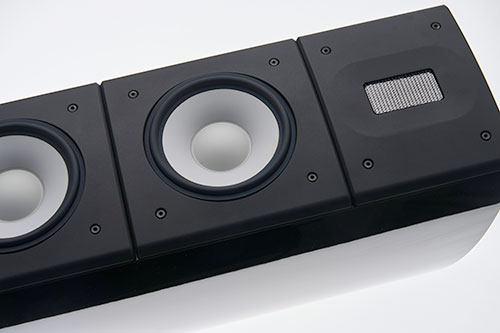In the most impressive audio set up I have ever had the opportunity to listen to, two 1000-watt power amplifiers were taking care of the amplification. However, the most expensive and even several times more powerful power amps that I came to host in my listening room were rather a disappointment. And now MSB's 1000-watt bolides have been bustling there for weeks. How much power does one actually need?
My colleagues Saile and Bussler may consider ten, in exceptional cases perhaps even 20 watts to be completely sufficient and point out that loudspeakers with a correspondingly high efficiency can also ensure absolutely satisfactory volume levels with this wattage. If you want to concentrate on this matter in depth and are not put off by a text in German, I recommend Jürgen Saile's very informative feature article on the subject. I can't and won't contradict the physical facts presented there, but I do disagree with the view that high efficiency transducers simply don't know how to put these loads of power into practice, for the loudspeaker system of the aforementioned audio chain, the Acapella Audio Arts Sphäron Excalibur, driven by two 1000-watt mono blocks, excels with an efficiency of over 100 decibels per watt and metre: Instantly everybody is set to enjoy transients like in a live music performance. The Excalibur does not seem to have any dynamic limitation - at least none that is below the pain threshold of the average human ear. However, I certainly don't want to propagate the mere abundance of power here. It would be too good to be true if wattage was going to be the only criterion to mark the quality of a power amplifier. Then we all could relax and simply go for the t.amp E-1200 offered by the German music trader Thomann, a Class-H stereo amplifier at a price of 229 Euros, which still delivers 1200 watts per channel into four ohms, and waft away into ultimate audiophile delights. Unfortunately, this happens not to be the case.

When reviewing the Goebel Epoque Fine, the predecessor of my current speakers, more than eight years ago, real watt monsters had to replace the fine Brinkmann mono amps, as they had fallen victim to the impedance drop of the Epoque Fine at that time. When it comes to sound, however, the two power plants could not hold a candle to the Brinkmann monos, which were certainly going through stressy moments even before they passed from this life. It is commonly much more difficult to develop a power amplifier with, say, 1000 watts than one that sounds just as good with "only" 100 or 200 watts. That's why the designers of the MSB M500 amps should at the outset deserve the highest praise if their monos were going to perform as light-footed and nimble on the now finally amplifier-friendly Epoque Aeon Fine as Einstein's The Poweramp with its mere 140 watts per channel into four ohms. But more about the sonic outcome later.
As one might expect from experience with one or the other MSB component - and also by looking at the price tag - these monos are perfectly finished. The fact that their shape - a rectangle with strongly rounded corners - echoes that of the plinth of the Goebel transducers is, of course, pure coincidence, but it contributes to the circumstance that the MSBs - despite their impressive physique - perfectly integrate in my spatially quite limited listening room merely because of their looks. Furthermore, MSB lets also their monos follow the company's proven plain and functional design path. There are neither edgy cooling fins nor handles - although these would be mostly welcome when transporting these heavyweights - nor any other swaggering visual digression - very well done indeed. Speaking of heatsinks: each of them is milled from a block of billet aluminum weighing over 23 kilograms in a process that takes about eight hours. What remains are two structures weighing about eight kilograms each, which with their combined surface area of 6.45 square metres ensure sufficient heat dissipation. As this effort is made, the dimensions of the cooling fins can also be varied to optimise the resonance behaviour. The M500 mono blocks are devised as a modular concept, so that the S500 stereo power amplifier can also be assembled from this module system. MSB entitles the huge toroidal transformer, the capacitor bank with its 1,000,000 microfarads or, shorter, one farad, the output stages, as well as the input stage with its switchable input impedance as "cores". After completion, these cores are subjected to rigorous quality tests and then stocked so that orders can be responded to spontaneously.

























 |
|


















































































